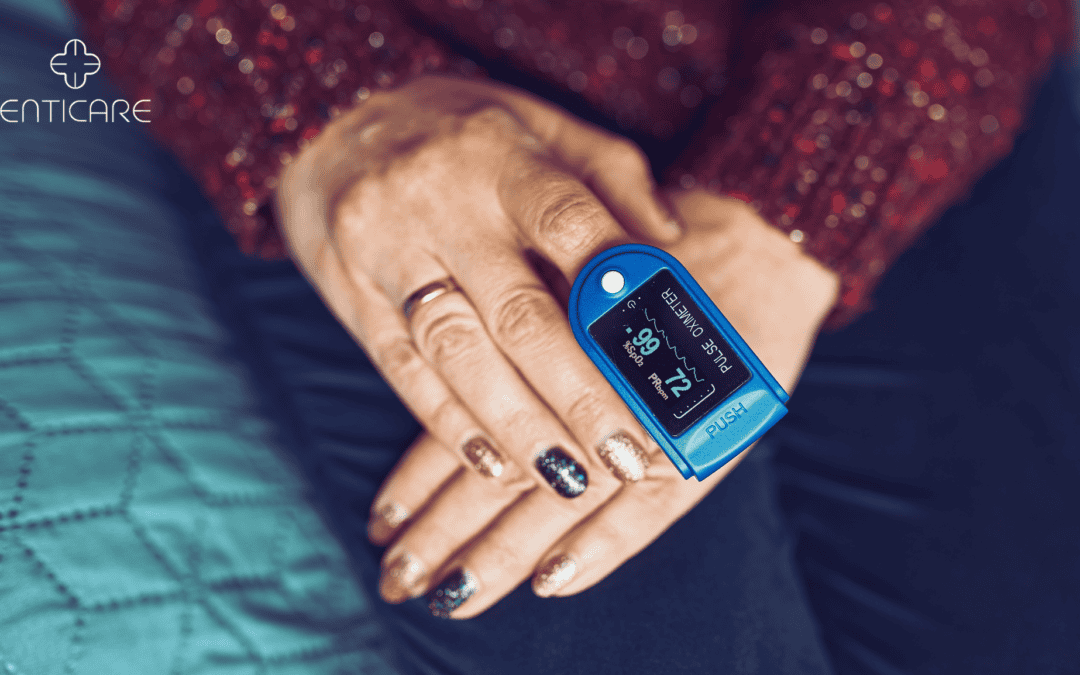Sleep apnea is a common yet often misunderstood condition that can have profound effects on your health. One of the most concerning aspects of sleep apnea is its potential impact on your blood oxygen levels, particularly blood oxygen saturation, not only during sleep but also during the day. This blog will explore how sleep apnea affects your blood oxygen levels throughout the day, the consequences of these fluctuations, and what you can do to manage and mitigate these effects.
Understanding Sleep Apnea: What Happens During the Night?
The Basics of Obstructive Sleep Apnea
Sleep apnea is a sleep disorder where breathing repeatedly stops and starts during sleep. The most common form is obstructive sleep apnea (OSA), which occurs when the throat muscles intermittently relax and block the airway during sleep. Central sleep apnea, a less common form, happens when your brain doesn’t send proper signals to the muscles that control breathing.
Sleep Apnea’s Impact on Nighttime Oxygen Levels
During an apnea event, the airway becomes blocked, preventing oxygen from entering the lungs. Individuals suffering from severe sleep apnea may experience more significant drops in blood oxygen levels, with prolonged periods of low blood oxygen during the night. This blockage can last from a few seconds to over a minute, causing a drop in blood oxygen levels. When oxygen levels decrease, the brain senses this and briefly awakens the person from sleep to reopen the airway. These interruptions can occur hundreds of times during the night, leading to fragmented sleep and persistent low oxygen levels.
Immediate Consequences: Hypoxia
The immediate consequence of sleep apnea is hypoxia, a condition where the body or a region of the body is deprived of adequate oxygen supply. Chronic hypoxia can lead to various health issues, including high blood pressure, heart disease, and stroke.
Daytime Blood Oxygen Levels: The Lingering Effects of Sleep Apnea
Residual Hypoxia: The Daytime Danger
While sleep apnea primarily disrupts oxygen levels at night, the effects can linger into the daytime for sleep apnea patients. Residual hypoxia refers to the lower-than-normal blood oxygen levels that persist even after waking up. This can occur because the body hasn’t fully recovered from the repeated drops in oxygen levels during sleep.
Fatigue and Cognitive Impairment
Low oxygen levels during the day can lead to significant fatigue and cognitive impairment. When your brain doesn’t receive enough oxygen, it struggles to function optimally, leading to problems with concentration, memory, and overall cognitive function. This can affect your work, relationships, and quality of life.
Increased Cardiovascular Risk
Persistent low blood oxygen levels during the day can also increase the risk of cardiovascular problems for obstructive sleep apnea patients. The heart must work harder to supply oxygen to the body, which can lead to high blood pressure, heart disease, and other cardiovascular issues. Over time, this added strain on the heart can have serious consequences for your long-term health.
Monitoring and Managing Daytime Oxygen Levels
The Importance of Monitoring Oxygen Levels
If you have sleep apnea, monitoring your blood oxygen saturation levels throughout the day is crucial. This can be done using a pulse oximeter, a small device that clips onto your finger and measures your oxygen saturation. Keeping track of these levels can help you understand the impact of sleep apnea on your body and guide your treatment plan.
Lifestyle Changes to Improve Oxygen Levels
Several lifestyle changes can help improve your daytime oxygen levels. Regular exercise can increase your lung capacity and improve your overall cardiovascular health. Maintaining a healthy weight can also reduce the severity of sleep apnea, as excess weight can contribute to airway obstruction.
Treatment Options for Sleep Apnea
Treating sleep apnea is the most effective way to improve both nighttime and daytime oxygen levels. Continuous Positive Airway Pressure (CPAP) therapy is the most common treatment for sleep apnea. It involves wearing a mask over your nose or mouth while you sleep, which delivers a continuous flow of air to keep your airway open. Other treatment options include oral appliances, weight loss, and, in some cases, surgery. Specialists in sleep medicine play a crucial role in diagnosing and treating sleep apnea, often collaborating with dentists to provide effective treatments such as oral appliance therapy.
The Importance of Professional Guidance
Why You Should Consult a Specialist
If you suspect you have sleep apnea or are experiencing symptoms like excessive daytime sleepiness, morning headaches, or difficulty concentrating, it’s important to consult a sleep specialist to get sleep apnea diagnosed. A professional can diagnose the severity of your condition and recommend the most effective treatment options.
Understanding the Long-Term Implications
Ignoring sleep disorders like sleep apnea can lead to serious long-term health consequences. Chronic low blood oxygen levels can damage your organs and increase your risk of life-threatening conditions like heart disease and stroke. Early diagnosis and treatment can prevent these complications and improve your quality of life.
Personalized Treatment Plans
Each person’s experience with sleep apnea is unique, and so should their treatment plan. A sleep specialist can help you develop a personalized plan that addresses your specific needs, ensuring that your treatment is both effective and manageable.
Conclusion: Take Control of Your Health
Sleep apnea doesn’t just disrupt your sleep—it can have far-reaching effects on your health, including lowering your daytime blood oxygen levels. Understanding these effects and taking proactive steps to manage your condition can significantly improve your quality of life. If you suspect you have sleep apnea or are struggling with symptoms, don’t wait to seek help. Schedule an appointment with our specialists today and take the first step toward better health.
Schedule an appointment with us to discuss your symptoms and explore your treatment options.

